With pgAdmin:
1) Right-click *Servers > my-postgres > Databases*
2) Select _Create > Database..._
3) Insert a name for the database and hit _Save_
With psql:
1) Enter command
```sql
CREATE DATABASE ;
```
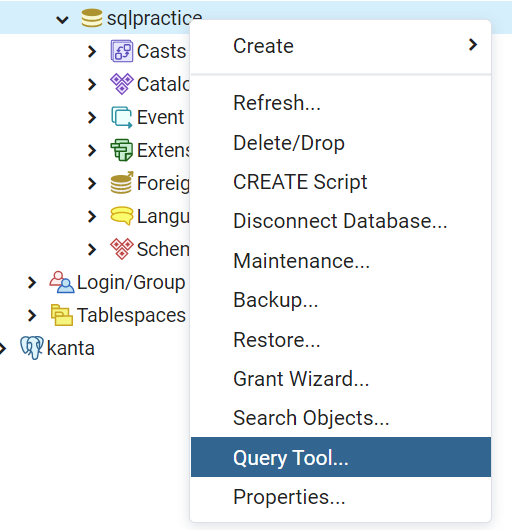
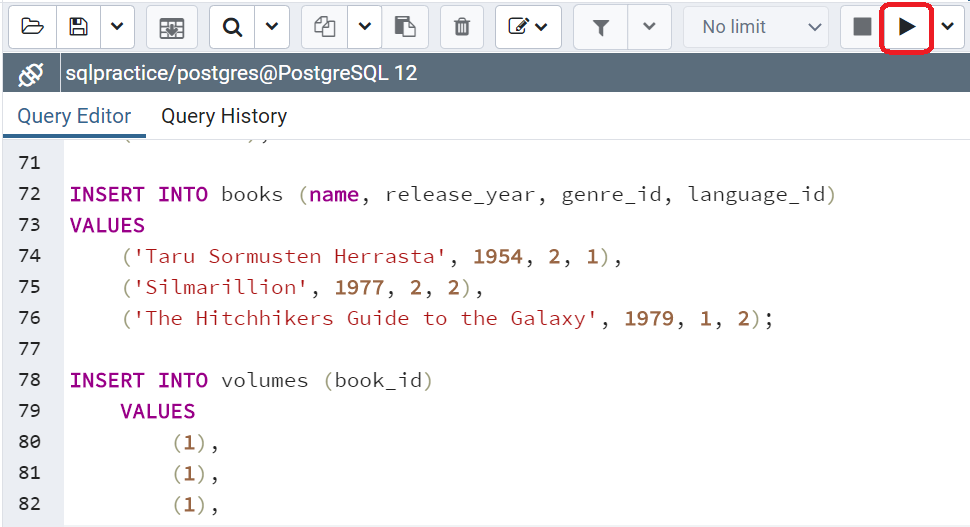
---
With psql:
1) List all available databases with `\l`
2) Connect to the created database with `\c `
3) List all tables in the database with `\dt`
4) Type a query and press enter
* Here's an [example query](code-examples/example-query.sql)
## Editing Data with pgAdmin
* Inspect and edit data in pgAdmin by right-clicking a table and selecting _View/Edit Data_
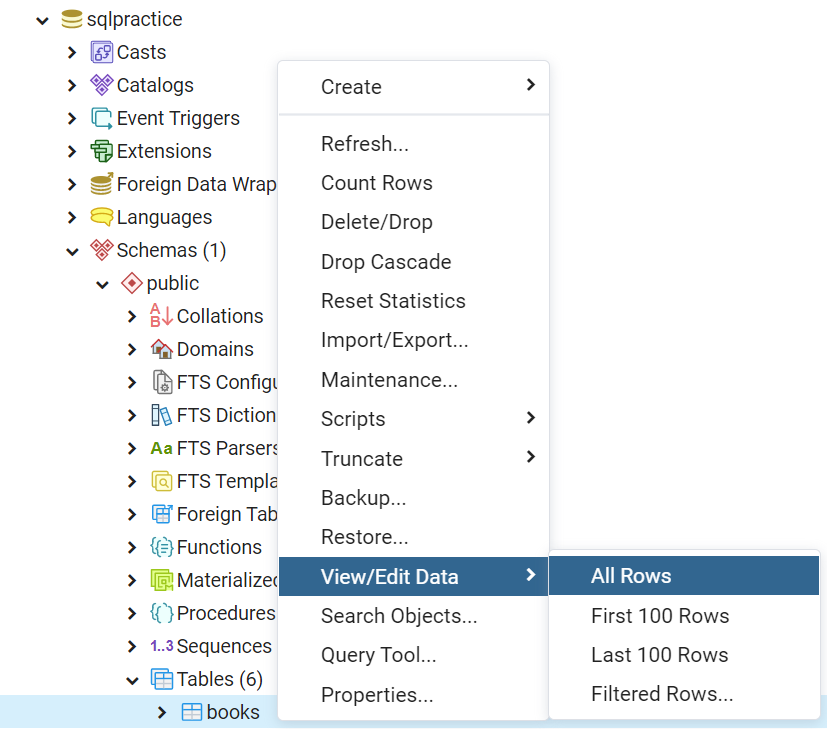
---
* Individual values in the table can be directly modified by double clicking the value and then editing the value in the visual user interface
* Save the changes by pressing the _Save Data Changes_ button

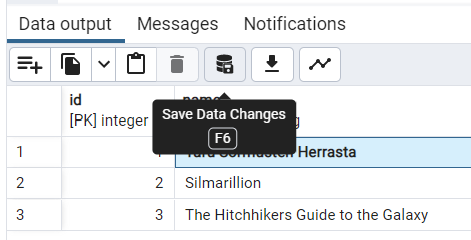
## Exercise 1: Preparing the database
Using either PgAdmin or PSQL,
1) Create a new database called `sqlpractice`
2) Insert the provided [example query](code-examples/example-query.sql) to the new database
3) Verify that the query has created new tables to your database
## Basic SQL queries
* `SELECT`
* `INSERT`
* `DELETE`
* `UPDATE`
* `CREATE` & `DROP`
### Querying data with `SELECT`
* Syntax:
```sql
SELECT column1, column2, column3 FROM table_name;
```
* Examples:
```sql
SELECT full_name, email FROM users;
SELECT full_name AS name, email FROM users;
SELECT * FROM users;
```
### Filtering data with `WHERE`
* Syntax:
```sql
SELECT column1, column2 FROM table_name WHERE condition;
```
* Text is captured in **_single quotes_**.
* `LIKE` condition uses the `%` sign as a wildcard.
* `IS` and `IS NOT` are also valid operators.
* Example:
```sql
SELECT full_name FROM users
WHERE full_name = 'Teppo Testaaja';
SELECT * FROM books WHERE name LIKE '%rr%';
SELECT * FROM books WHERE author IS NOT null;
```
### Ordering data with `ORDER BY`
* Syntax:
```sql
SELECT column1 FROM table_name ORDER BY column1 ASC;
```
* Examples:
```sql
SELECT full_name FROM users
ORDER BY full_name ASC;
SELECT full_name FROM users
ORDER BY full_name DESC;
```
### Combining data with `JOIN`
* Also known as `INNER JOIN`
* Corresponds to ***intersection*** from [set theory](https://en.wikipedia.org/wiki/Set_theory)
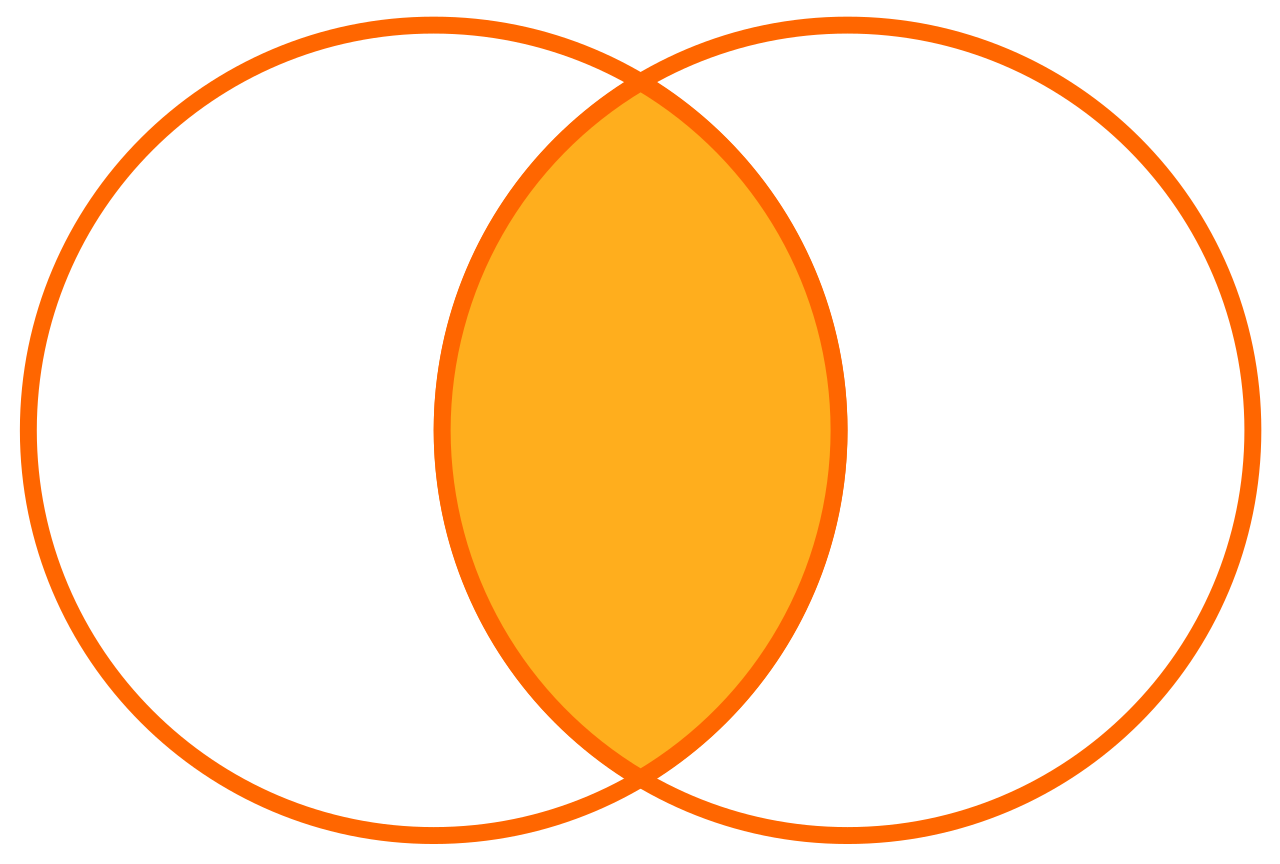
#### JOIN examples
```sql
SELECT
users.id, users.full_name, borrows.id,
borrows.user_id, borrows.due_date, borrows.returned_at
FROM users
JOIN borrows ON
users.id = borrows.user_id;
```
```sql
SELECT
U.full_name AS name,
B.due_date AS due_date,
B.returned_at AS returned_at
FROM users AS U
JOIN borrows AS B ON
U.id = B.user_id;
```
### Combining with `LEFT JOIN`
* Also known as `LEFT OUTER JOIN`
* Example:
```sql
SELECT
U.full_name AS name,
B.due_date AS due_date,
B.returned_at AS returned_at
FROM users AS U
LEFT JOIN borrows AS B ON
U.id = B.user_id;
```
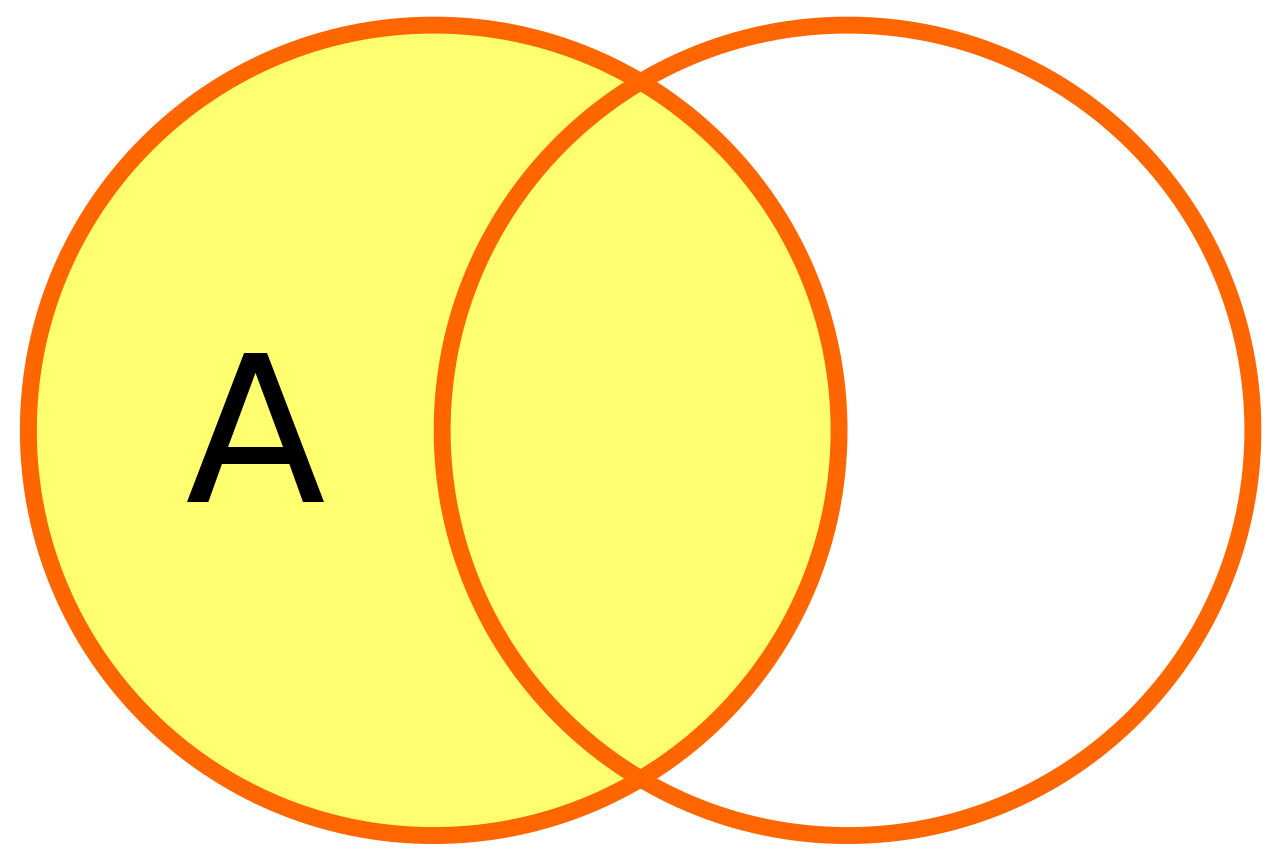
### Exercise 2: Querying the library
Using SQL queries, get
1) all columns of `borrows` that are borrowed before `2020-10-27`
2) all columns of `borrows` that are returned
3) columns `user.full_name` and `borrows.borrowed_at` of the user with an `id` of 1
4) columns `book.name`, `book.release_year` and `language.name` of all books that are released after 1960
### Inserting data with `INSERT`
* Syntax
```sql
INSERT INTO table_name (column1, column2, column3) VALUES (value1, value2, value3);
```
* Example
```sql
INSERT INTO users (full_name, email, created_at)
VALUES ('Pekka Poistuja', 'pekka.poistuja@buutti.com', NOW());
```
* Since id is not provided, it will be automatically generated.
### Updating data with `UPDATE`
* Syntax
```sql
UPDATE table_name SET column1 = value1, column2 = value2 WHERE condition;
```
* *__Notice:__* if a condition is not provided, all rows will be updated!
* If updating only one row, it is usually best to use `id`.
* Example
```sql
UPDATE users SET email = 'taija.testaaja@gmail.com' WHERE id = 2;
```
## Removing data with `REMOVE`
* Syntax
```sql
DELETE FROM table_name WHERE condition;
```
* Again, if the _condition_ is not provided, `DELETE` affects _all_ rows
* Before deleting, it is a good practice to execute an equivalent `SELECT` query to make sure that only the proper rows will be affected.
* Example:
```sql
SELECT * FROM users WHERE id = 5;
DELETE FROM users WHERE id = 5;
```
### Exercise 3: Editing data
1) Postpone the due date of the borrow with an `id` of `1` by two days in the `borrows` table
2) Add a couple of new books to the `books` table
3) Delete one of the borrows.
### Initializing data with `CREATE TABLE`
* Before data can be manipulated, a database and its tables need to be initialized.
* Syntax
```sql
CREATE TABLE table_name (
column1 datatype,
column2 datatype,
...
);
```
* Example:
```sql
CREATE TABLE "users" (
"id" SERIAL PRIMARY KEY,
"full_name" varchar NOT NULL,
"email" varchar UNIQUE NOT NULL,
"created_at" timestamp NOT NULL
);
```
### Removing data with `DROP`
* In order to remove tables or databases, we use a `DROP` statement
```sql
DROP TABLE table_name;
DROP DATABASE database_name;
```
* These statements do not ask for confirmation and there is no undo feature. Take care when using a drop statement.
---
* I'm legally obliged to include this XKCD comic here.

## NoSQL
* In addition to SQL databases, there's ***NoSQL***
* There are many differing definitions, but...
* most agree that NoSQL databases store data in a format other than tables
* They can still store relational data - just _differently_
* Four different database types:
* Document databases
* Key-value databases
* Wide-column stores
* Graph databases
* Example database engines include [MongoDB](https://www.mongodb.com/), [Redis](https://redis.io/) and [Cassandra](https://cassandra.apache.org/_/index.html)
* For more info, see [MongoDB: What is NoSQL?](https://www.mongodb.com/resources/basics/databases/nosql-explained)
## Object-Relational Mappers
* Object-Relational Mappers, or ORMs allow the developer to write code instead of SQL to perform CRUD operations on their database
* An abstraction layer between code and database
* Can make database logic easier to read and write
* Prevents SQL injection by sanitizing input (see the comic before...)
* ...but sometimes you'd rather just write the SQL queries themselves
* Some popular ORMs:
* Hibernate (Java)
* EFCore (.NET)
* Sequelize (Node.js)
* TypeORM (TypeScript)